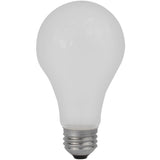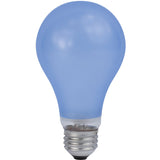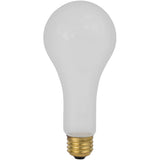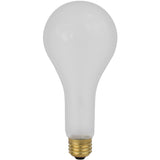What Do Common Light Bulb Coatings Mean?
Posted by Dave on for ProLampSales

Have you ever wondered why some light bulbs are coated while others are clear? The majority of light bulbs that are sold in the market nowadays, rather than being completely clear like the original Edison bulbs, have different coatings.
Clear bulbs are often used in situations where abrupt and extreme light is needed. To achieve this effect, this setup allows us to directly see the illuminated tungsten filament of an incandescent or halogen bulb. These bulbs are more similar to the original bulbs made by Thomas Edison than the CFL and LEDs that are designed to replace them. Nonetheless, this type of bulb is less preferred by many as it usually introduces undesirable shadows.
This is essentially the main reason why coated light bulbs were developed.
One type of light bulb coating is called an "inside frost." The resulting light after the application of this coating is softer and much more pleasant to the eyes. It may appear that the bulb's illuminating power is reduced in the process but it actually remains the same because the emitted light is only diffused and not blocked.
On the other hand, there is a different process involved with light bulbs that are coated with white. This type of light bulb is very popular nowadays since this approach won't affect surrounding colors resulting in a natural but lighter environment. Finely powdered white silica is the main ingredient in this type of coating and is applied inside the bulb. This process is better than "inside frost" in terms of diffusing light so this type of light bulbs will be brighter while minimizing shadows.
The last type of light bulb coating uses neodymium which makes the resulting light bluish in color. Perfect examples for this coating are "daylight" incandescent bulbs. Unlike while light bulbs, these are meant not to provide a natural light but bring in a daylight effect by filtering out the warmer wavelengths light. Photography bulbs can also be coated blue to simulate daylight closer than regular incandescent lamps at a warmer color temperature.
Aside from these two common coatings, there are also specialized types commonly used for specific industries like those that provide shatter-resistance to light bulbs.
Coatings for fluorescent tubes are also another related but huge topic. Various materials are used to create different phosphors to create all sorts of light emissions from fluorescent bulbs. While halophosphate is the most widely used material to manufacture architectural fluorescent lamps, rare earth element phosphors can be combined to improve the color rendering of these bulbs. With UVC germicidal bulbs, no coating is used, while UVA and UVB bulbs use other phosphors that may shorten the bulb life.
These days, clear light bulbs are most often used in specialty equipment. Many stage/studio bulbs are clear because extreme light is required and diffusers can be used elsewhere in the lighting system to control effects.
Featured Products (View All)
- 0 Comments
- Posted in Halogen, Incandescent
0 Comments




